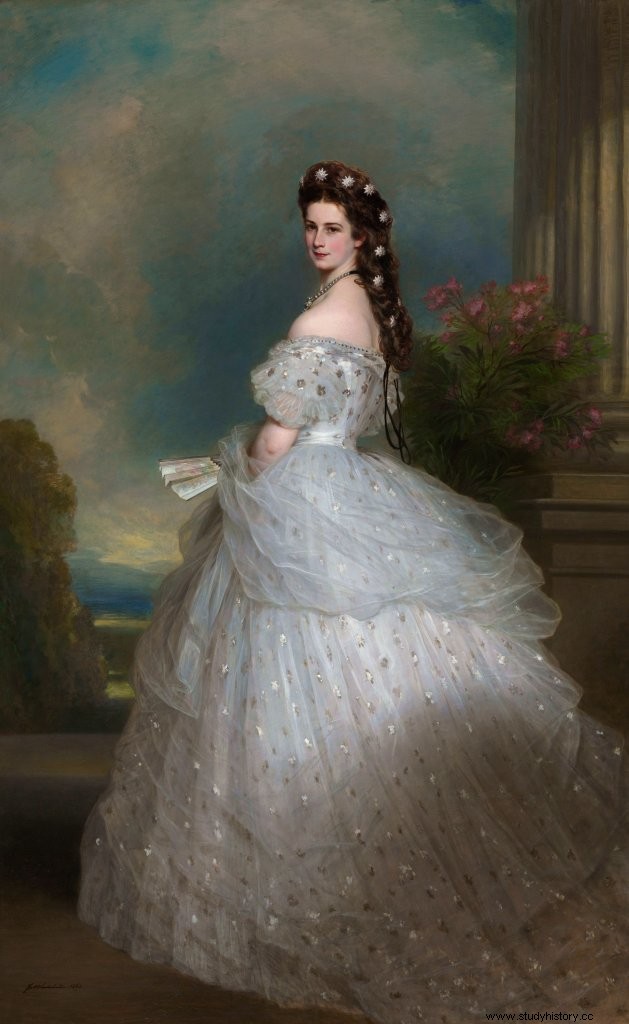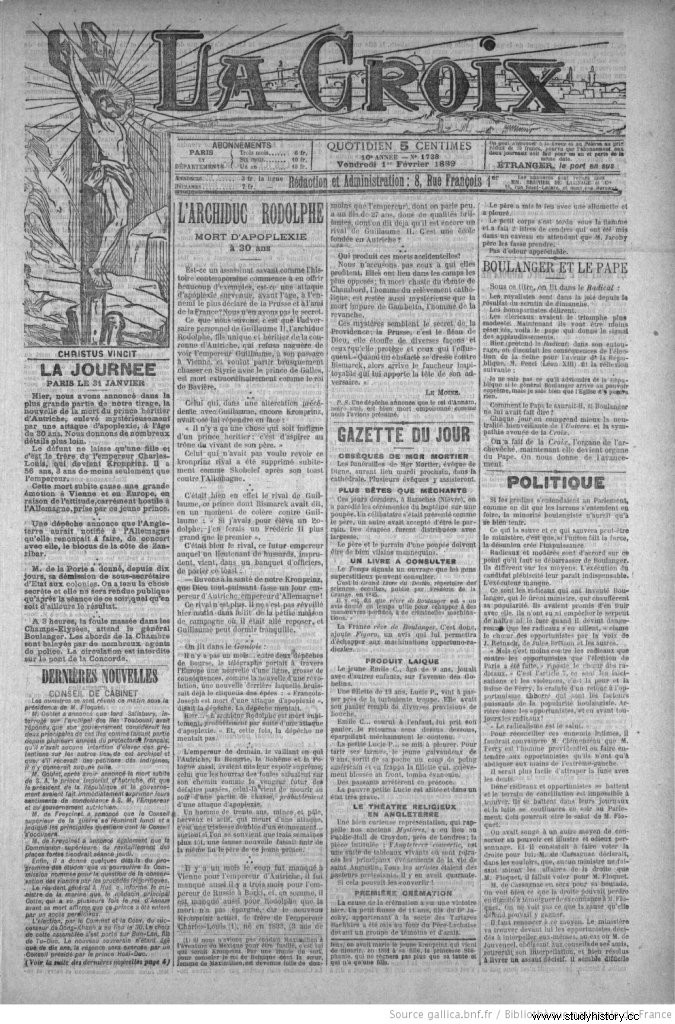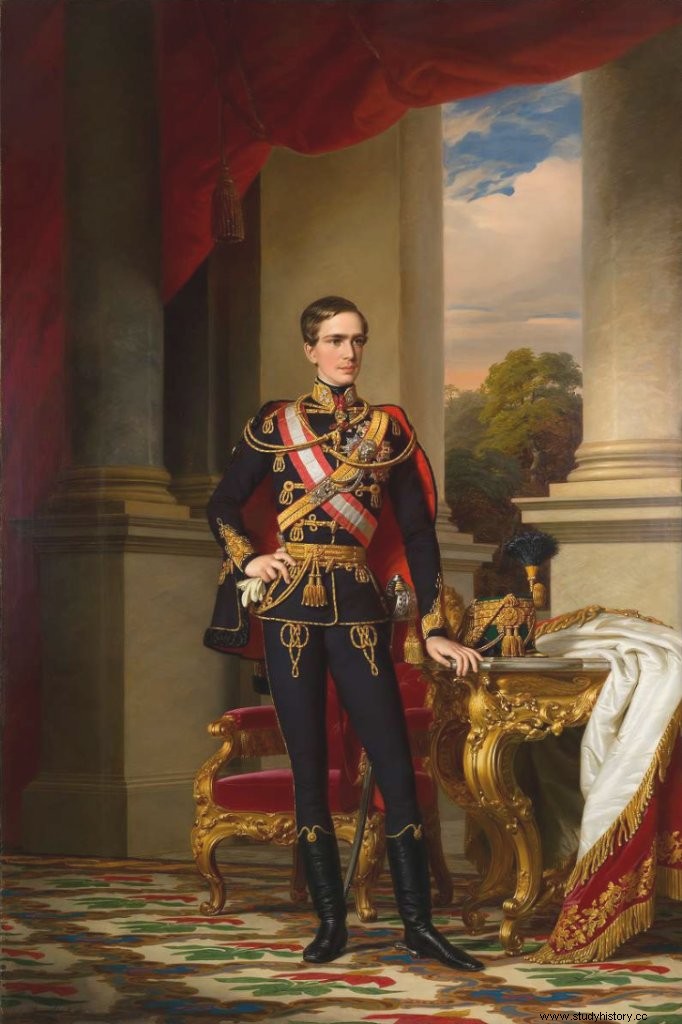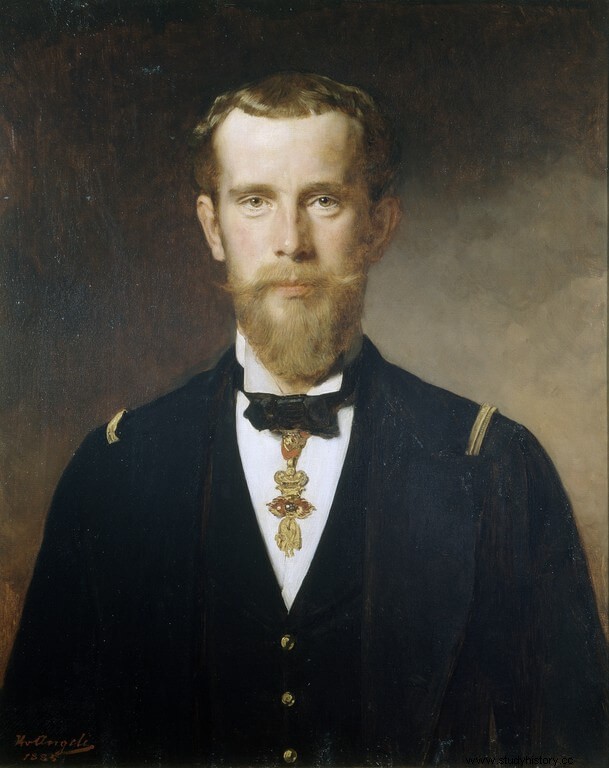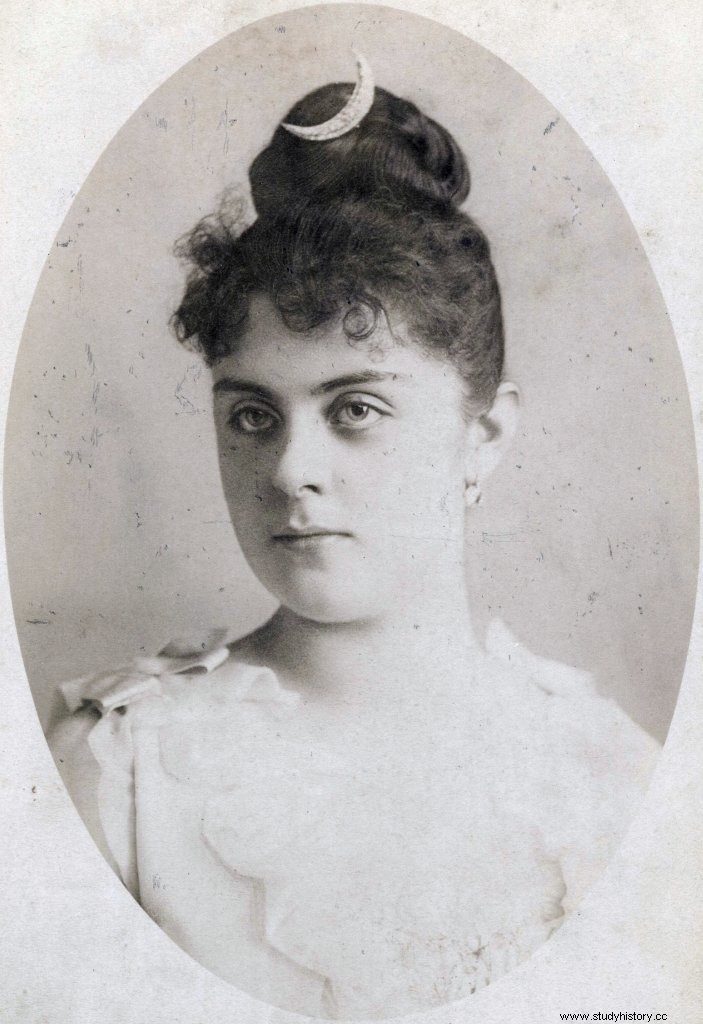It was a real drama that took place in Mayerling at the beginning of the year 1889 . Empress Elisabeth, known as Sissi, and Emperor François-Joseph mourn the death of their son , Crown Prince Rudolf of Austria. Assassination or suicide? Let's go back together to the circumstances of this tragedy which affected the entire Austrian imperial family.
The disastrous fate of Prince Rudolf of Austria
Mayerling's drama
It is a shattering event which has just occurred on January 30, 1889, in the small hunting lodge of Mayerling. As the snow has taken up residence on Austrian lands, the news spreads like gunpowder:Rodolf of Austria, Crown Prince of Austria and darling son of the Empress of Austria, is dead ! But the drama doesn't end there. Contemporaries learn that Prince Rudolph died a very violent death. Beside his body bathed in his blood is his mistress, Marie Vetsera. The young woman also died violently. Rodolphe was then 30 years old, Marie was not even 17 .
This dramatic scene is discovered by Loschek, the valet of Prince Rudolf of Austria. It's 7:50 a.m., as usual, Loschek knocks on his master's door to help him get ready. But there, no response from Rudolf of Austria. The door is locked from the inside, the valet begins to worry. He runs to fetch Count Hoyos, a friend of the Archduke who accompanies the couple. After having forced the lock, it is a scene of horror which is offered to the two men. Lying on the bed, the two lifeless bodies of Rudolf of Austria and Marie Vetsera , riddled with bullets. The mistress' corpse is covered with flowers. Tempers flare. How did Prince Rudolph and his mistress find death at their age?
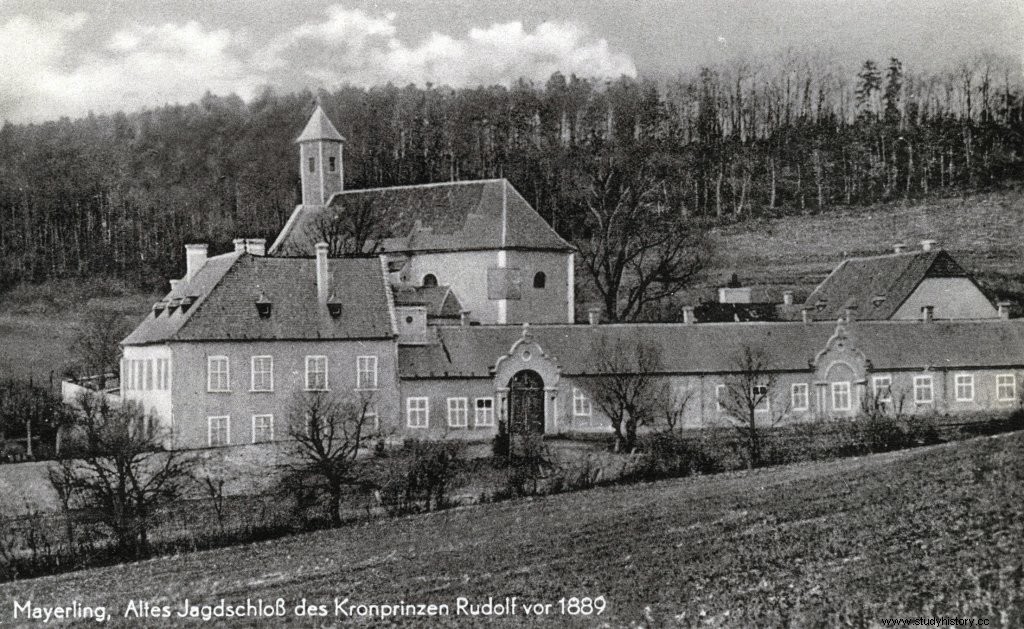
The news of the death of Rudolf of Austria arrives at the Hofburg Imperial Palace
That same afternoon, the Hofburg Imperial Palace in Vienna was filled with sadness. It's time to officially announce - even if the whole world already knows - the death of Archduke Rudolf of Austria. The official version announces that the Rodolphe heir died of a heart attack . Of course, no one believes it. Is this a crime? A suicide? An assassination? Rumors are rife, leaving everyone free to form their own opinion. Empress Sissi, for her part, is convinced that her beloved son died of poisoning. On February 1, 1889, a second announcement was made to correct the remarks. This time, it’s suicide “in a fit of madness” which comes to justify the death of Rodolphe of Austria.
The witnesses reportedly found letters handwritten by the two lovers. Here is Marie Vetsera's handwritten letter to her mother:”We are now very curious to know how the other world is made. Forgive me what I did, I couldn't resist love. ”. Rudolph meanwhile would have written:“I no longer have the right to live, I have killed! ”
The 3 doctors of the Court autopsy the body of the crown prince, and come to confirm the thesis of suicide . Rudolf of Austria allegedly shot himself in the temple – but no gun or bullet was found in the bedroom.
On February 6, 1889, the religious funeral of Prince Rudolf of Austria took place. Before that, many were able torecollect themselves near the body of the deceased . And astonishment is in order. Rudolf of Austria is presented with the skull surrounded by a bandage, but above all, his hands were gloved. Many people are amazed at the shape of his hands while wearing gloves. Be that as it may, the dramatic love story between Rodolphe and Marie crosses continents . It is then said that Rodolphe, madly in love with his beautiful baroness, could not stand his parents' refusal to marry the young woman. He would have preferred death to separation. But does this romantic story reflect the truth? What if politics were the real reason for this tragedy?
Crime of passion or political murder?
Let's go over the basics first. At the end of the 19th century, the Habsburg Empire was the main Catholic power in Europe. Emperor François-Joseph has established his all-powerful authority since the middle of the century. But the Emperor sees his policy rejected by his own heir , his son Rudolf of Austria. His liberal character pushes him to rise up against his father and Emperor with conservative ideas. He will even push the rebellion to the point of writing articles in Vienna daily newspapers using a pseudonym. He then denounced the privileges of the aristocracy and defends his ideal. This new wind that Rodolphe of Austria is blowing is not to displease European neighbors such as the Kingdom of France. The death of the prince leads to the fall of hope, that of a liberal and tolerant Europe.
As you will have understood, the thesis of political assassination is therefore not excluded. Even though Rudolf of Austria is in great favor across Europe, in his homeland, his enemies are around every corner. By embodying a new Austria, the Archduke shocks and disturbs. Could this political murder have been passed off as a crime of passion? Or is it the opposite?
The burial of the body of Rudolf of Austria may give us some clues. As the thesis of suicide roams the corridors of the Hofburg Imperial Palace, Pope Leo XIII has accepted Francis-Joseph's request to offer a religious ceremony to Rudolf . What were the Emperor's arguments to convince the Pope?
Who is Rudolf of Austria?
Rodolf of Austria grew up far from his mother Empress Sissi
Rodolphe of Austria is the only son born of the idyll between François-Joseph and Elisabeth of Austria , the famous Sissi. He was born August 21, 1858 at Laxenburg Castle near Vienna . He is the 3rd child of 4 siblings, the only boy among his sisters. He evolves with a father who is more concerned with his duties as Emperor than with his family. And who, when he is present, is particularly severe, especially with his son. His mother, Empress Sissi, is also absent and little devoted to the education of her son. The young Rodolphe of Austria suffers enormously from this parental absence. To get noticed by those around him, Archduke Rudolf of Austria will quickly develop a rebellious and fiery character, on the verge of depression at some points in his life . This absence is nevertheless filled by his paternal grandmother, the Archduchess Sophie, who will raise him alongside his sisters. Destined for royal power, the child must learn the basics of politics and the military. Even if the heir to the crown wanted to study natural sciences, he was sent in 1879 to the Thirty-sixth Infantry Regiment to perfect his military career.
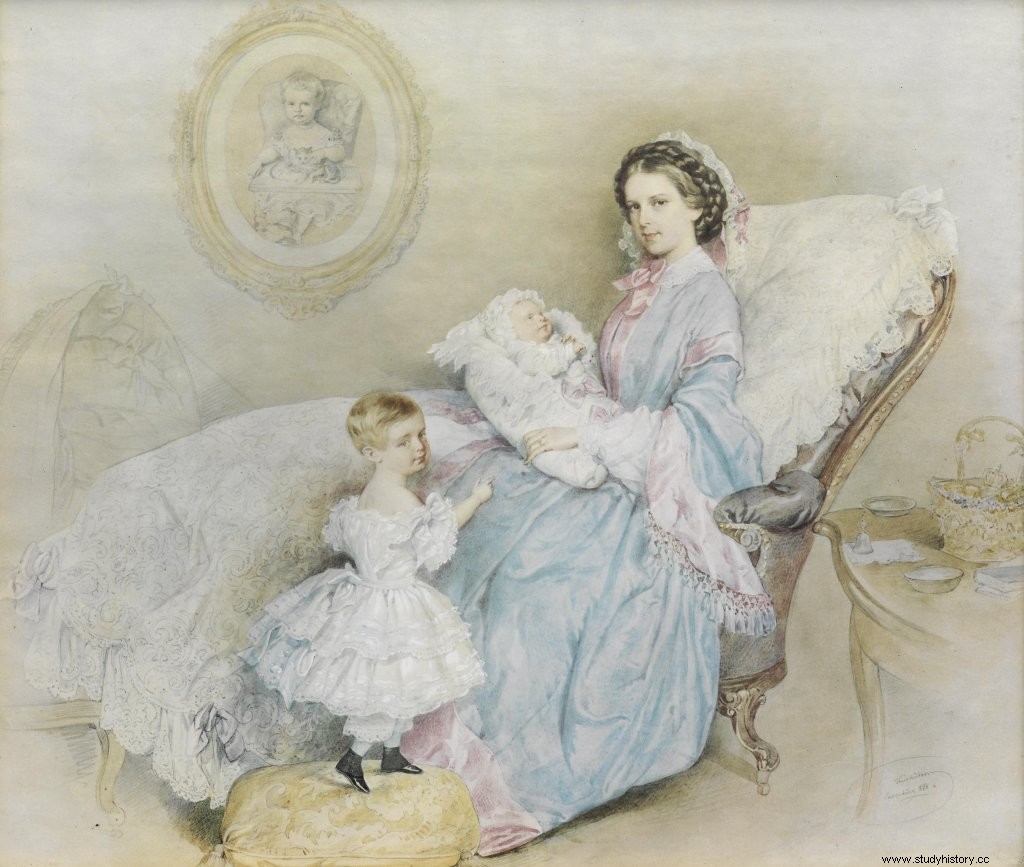
Prince Rudolph and Stephanie of Belgium
When he was 23 years old, Prince Rudolf of Austria married Stéphanie de Belgique, the daughter of King Leopold II . Prone to wisdom and stability, we hope Stéphanie will appease the rebellious Rodolphe. The wedding took place on May 10, 1881 in Vienna in the church of the Augustins.
Rudolph of Austria is a liberal prince, possessing an eccentric and whimsical character. He shows a real interest in hunting, but not only! Rodolf of Austria appreciates the pleasures of life , and especially the presence of these ladies.
This union is a real failure. Stephanie of Belgium, who is said to be unsightly and dull, struggles to satisfy her husband. His mother Empress Sissi nicknamed his wife “the hideous dromedary” or even “the Flemish peasant” . Despite everything, the Archduke is invested in his marriage, at least at the beginning. On September 2, 1883, Princess Stéphanie of Belgium gave birth to Elisabeth, nicknamed Erzsi. But the young father will quickly fall back into his youthful failings, and return to his “single” life . He will then chain the concubines. Mizzi Kaspar, an Austrian actress, becomes his official mistress. This beautiful brunette does not prevent the prince from multiplying carnal relations. In the fall of 1888, Rodolphe of Austria meets the one who will change his destiny, Marie Vetsera. It's a real passion which arises between the two lovers. Her joyful character echoes her fragility and imbalance. Marie brings to Rodolphe the tenderness and love he sorely lacked during his childhood.

Archduke Rudolf of Austria stirs up the Emperor's anger
The idyll is such that the Archduke Rudolf of Austria takes a radical decision. He wants to have his marriage annulled, to spend happy days with his beautiful. He therefore wrote to Pope Leo XIII asking him to recognize the nullity of his marriage to Stéphanie of Belgium . This is not to displease the Emperor François-Joseph, who summons his son on January 28, 1889. We know the stormy conversation, without really knowing its content. Be that as it may, Rodolphe's father does not accept this decision, and summons his son to put an end to sentimental projects. The next day, Rodolphe flees the Imperial Palace with his beloved to go to the Mayerling hunting lodge bought two years earlier. The couple are accompanied by Prince Philippe of Saxe-Coburg, brother-in-law of Rodolphe, and Count Joseph Hoyos. Young people go to Mayerling carefree, wanting to have a good time. Neither of them had any idea of the tragic fate that awaited them. Or maybe they both knew that their love was stronger than anything, risking their lives?
More than 100 years after this tragedy, the mystery still remains unsolved. However, it continues to cause a lot of ink to flow. This drama has had a great impact on history through the consequences it may have had . The death of Rudolph of Austria signaled the end of the Austrian Empire. Having no longer a male heir, the crown of François-Joseph went to Archduke François-Ferdinand, assassinated in Sarajevo in June 1914, drama which marked the beginning of the First World War. For more historical anecdotes, I'll give you an appointment on Carnet d'Histoire ⚜️

